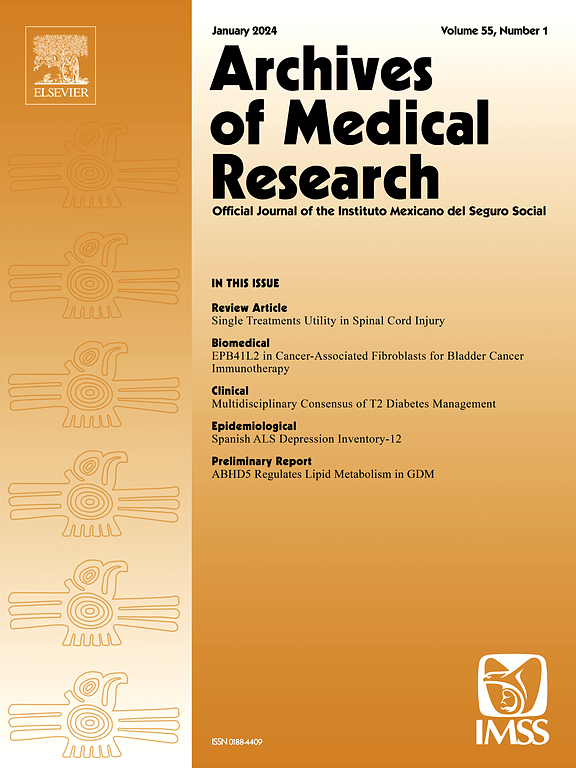你有多老,你的连接性就有多老:与年龄相关的手部灵活性和力量变化背后的不同神经生理学机制
IF 3.4
3区 医学
Q1 MEDICINE, RESEARCH & EXPERIMENTAL
引用次数: 0
摘要
背景:衰老会导致运动控制能力下降。虽然与年龄有关的运动障碍已被记录在案,但人们对皮质与皮质之间相互作用的潜在变化仍然知之甚少:我们利用双点经颅磁刺激(dsTMS)的高时间分辨率,研究了高阶喙突运动前区和初级运动皮层(M1)之间的交流如何影响年轻人和老年人的运动控制。我们评估了从额叶下回(IFG)或辅助运动前区(pre-supplementary motor area,preSMA)到 M1 的连接动态,测试了 IFG/preSMA 的调节如何影响不同时间间隔的 M1 刺激诱发的运动诱发电位(MEPs)的振幅。此外,我们还探讨了运动前-M1相互作用中与年龄相关的变化与运动表现的关系:结果:我们的研究结果表明,年轻人和老年人都有兴奋性 IFG-M1 和 preSMA-M1 相互作用,但两组的时间和强度不同。在年轻人中,IFG-M1 相互作用出现较早且具有时间特异性(8 毫秒),而在老年人中,IFG-M1 相互作用出现较晚且持续时间更长(12-16 毫秒)。前SMA-M1相互作用在年轻人中出现较早(6 毫秒),在 10-12 毫秒时达到峰值,但在老年人中减弱。重要的是,IFG-M1回路的连通性与年轻组群相似,预示着老年人的灵活性更好,而保留前SMA-M1相互作用预示着老年人的力量更大,这表明与年龄相关的运动衰退与运动前网络的特定变化有关:结论:保持老年人年轻时运动网络的连通性与维持运动表现有关,并为针对衰老对行为影响的干预措施提供了信息。本文章由计算机程序翻译,如有差异,请以英文原文为准。
You Are as Old as the Connectivity You Keep: Distinct Neurophysiological Mechanisms Underlying Age-Related Changes in Hand Dexterity and Strength
Background
Aging can lead to a decline in motor control. While age-related motor impairments have been documented, the underlying changes in cortico-cortical interactions remain poorly understood.
Methods
We took advantage of the high temporal resolution of dual-site transcranial magnetic stimulation (dsTMS) to investigate how communication between higher-order rostral premotor regions and the primary motor cortex (M1) influences motor control in young and elderly adults. We assessed the dynamics of connectivity from the inferior frontal gyrus (IFG) or pre-supplementary motor area (preSMA) to M1, by testing how conditioning of the IFG/preSMA affected the amplitude of motor evoked potentials (MEPs) induced by M1 stimulation at different temporal intervals. Moreover, we explored how age-related changes in premotor-M1 interactions relate to motor performance.
Results
Our results show that both young and elderly adults had excitatory IFG-M1 and preSMA-M1 interactions, but the two groups’ timing and strength differed. In young adults, IFG-M1 interactions were early and time-specific (8 ms), whereas in older individuals, they were delayed and more prolonged (12-16 ms). PreSMA-M1 interactions emerged early (6 ms) and peaked at 10-12 ms in young individuals but were attenuated in older individuals. Critically, a connectivity profile of the IFG-M1 circuit like that of the young cohort predicted better dexterity in older individuals, while preserved preSMA-M1 interactions predicted greater strength, suggesting that age-related motor decline is associated with specific changes in premotor-motor networks.
Conclusions
Preserving youthful motor network connectivity in older individuals is related to maintaining motor performance and providing information for interventions targeting aging effects on behavior.
求助全文
通过发布文献求助,成功后即可免费获取论文全文。
去求助
来源期刊

Archives of Medical Research
医学-医学:研究与实验
CiteScore
12.50
自引率
0.00%
发文量
84
审稿时长
28 days
期刊介绍:
Archives of Medical Research serves as a platform for publishing original peer-reviewed medical research, aiming to bridge gaps created by medical specialization. The journal covers three main categories - biomedical, clinical, and epidemiological contributions, along with review articles and preliminary communications. With an international scope, it presents the study of diseases from diverse perspectives, offering the medical community original investigations ranging from molecular biology to clinical epidemiology in a single publication.
 求助内容:
求助内容: 应助结果提醒方式:
应助结果提醒方式:


